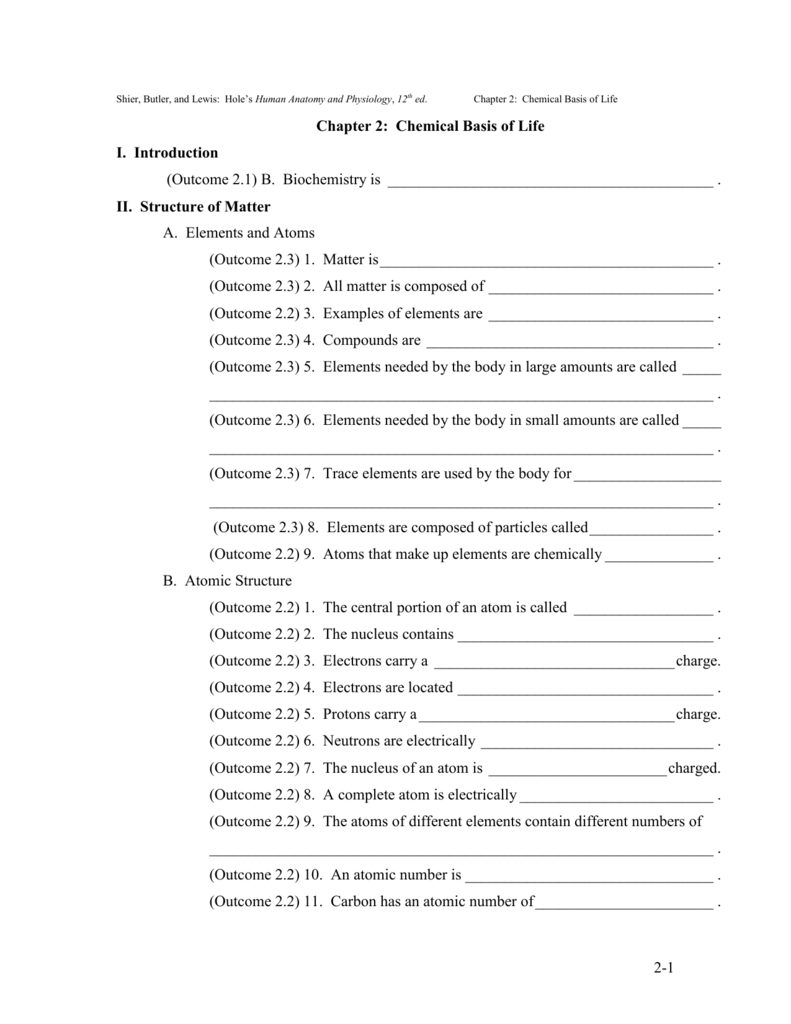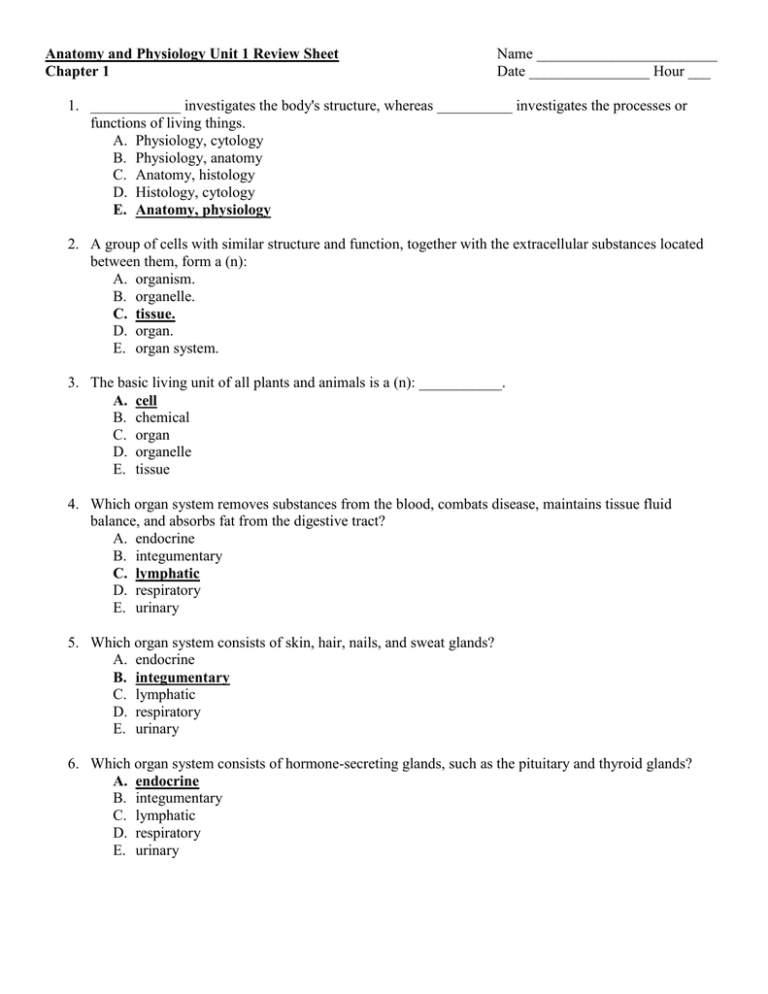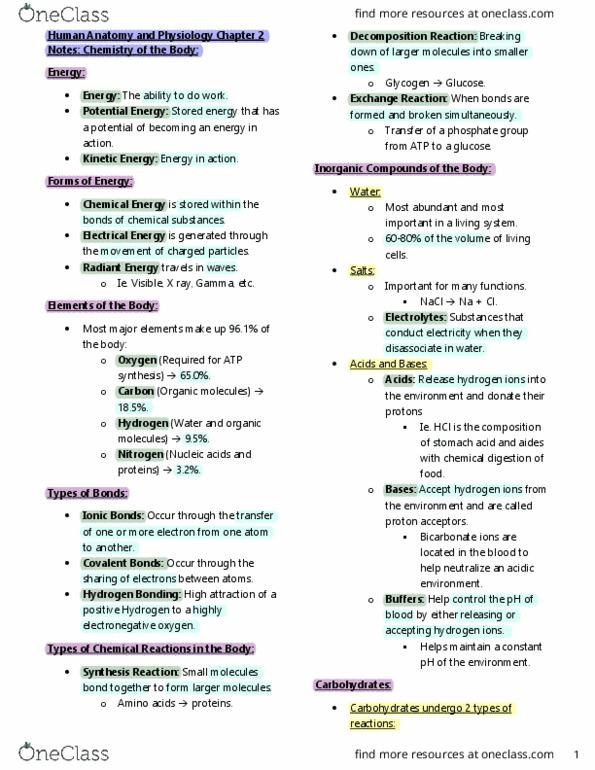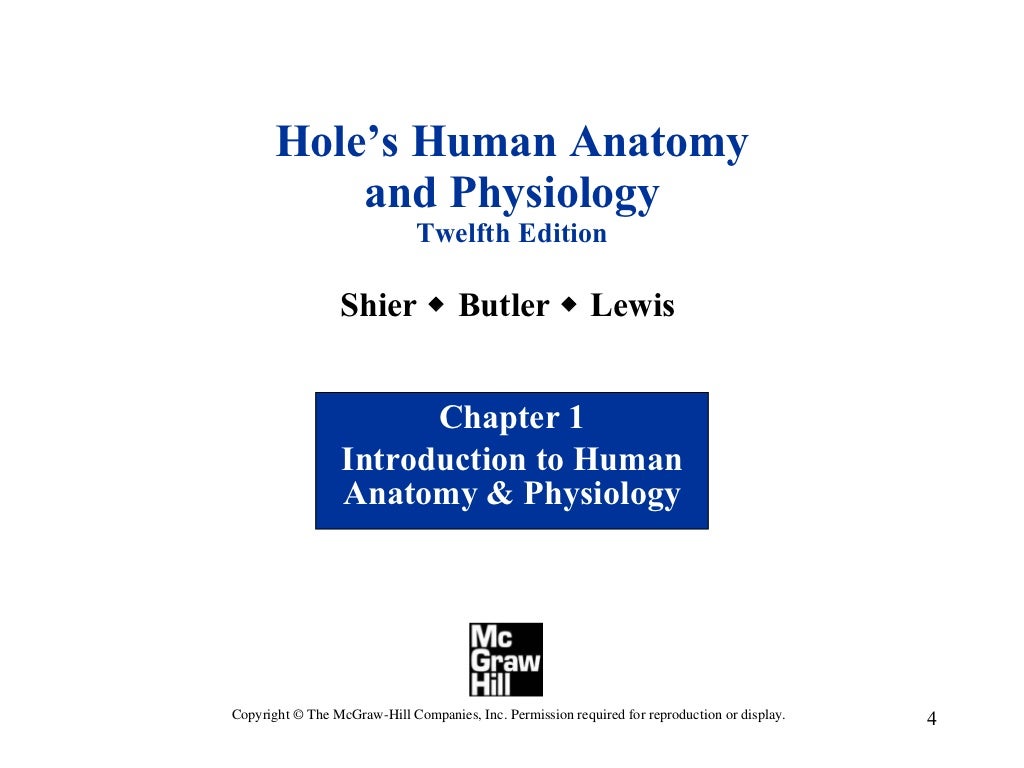Chapter 2 Anatomy And Physiology
Chapter 2 Anatomy And Physiology - The study and the functions and activities performed by the body structures,. The book is organized by body. Anatomy and physiology introduction classify individual body system functions based on their contribution to vital human functions. The tissue level of organization. Web an introduction to the human body. Click the card to flip 👆 8 to 10 pints click the card to flip 👆 1 / 97 flashcards learn. Web milady chapter 2 anatomy and physiology 4.6 (8 reviews) abduction click the card to flip 👆 muscles that draw a body part, such as a finger, arm, or toe, away from the midline of the body or of an extremity. The cellular level of organization. You will learn the basic characteristics of the four main types of tissues, the general and. Web 2.1 elements and atoms:
Identify the three subatomic particles. Identify the four most abundant elements in the body. Web an introduction to the human body. Unit 3 circulatory system diseases. Unit 6 hematologic system physiology and disease. Unit 2 circulatory system anatomy and physiology. Unit 4 respiratory system anatomy and physiology. Web the epididymis and vas deferens carry sperm from the testes to the urethra. Is anything that occupies space and has mass. Web gain an even greater knowledge of the human body in the human anatomy and physiology ii course.
Web milady chapter 2 anatomy and physiology 4.6 (8 reviews) abduction click the card to flip 👆 muscles that draw a body part, such as a finger, arm, or toe, away from the midline of the body or of an extremity. Web unit 1 introduction to human body systems. Identify the three subatomic particles. Web distinguish the major functions of the nervous system: Unit 6 hematologic system physiology and disease. The testes manufacture sperm and secrete testosterone. Compare and contrast anatomy and physiology, including their specializations and methods of study discuss the fundamental relationship between anatomy and physiology human anatomy. Web anatomy and physiology chapter 2. Web an introduction to the human body. Unit 5 respiratory system diseases.
Chapter 2 Anatomy And Physiology Anatomical Charts & Posters
Web the epididymis and vas deferens carry sperm from the testes to the urethra. Web anatomy and physiology chapter 2. Web milady chapter 2 anatomy and physiology 4.6 (8 reviews) abduction click the card to flip 👆 muscles that draw a body part, such as a finger, arm, or toe, away from the midline of the body or of an.
Anatomy and Physiology Unit 1 Review Sheet Chapter 1 Name
Web 2.1 elements and atoms: Unit 7 endocrine system physiology. The cellular level of organization. Identify the four most abundant elements in the body. The testes manufacture sperm and secrete testosterone.
Principles of Anatomy and Physiology, Chapter 2, The Chemical Level of
Anatomy is a branch of the field of. Web the epididymis and vas deferens carry sperm from the testes to the urethra. The study of the structures of the human body, and the substances these structures are made of. Unit 7 endocrine system physiology. The tissue level of organization.
Chapter 1 Introduction to Anatomy and Physiology YouTube
Web 2.1 elements and atoms: Compare and contrast anatomy and physiology, including their specializations and methods of study discuss the fundamental relationship between anatomy and physiology human anatomy. Describe how the “big ideas” in anatomy and physiology to. The testes manufacture sperm and secrete testosterone. Web the epididymis and vas deferens carry sperm from the testes to the urethra.
Chapter 2 Anatomy And Physiology Anatomical Charts & Posters
Web at quizlet, we’re giving you the tools you need to take on any subject without having to carry around solutions manuals or printing out pdfs! Unit 2 circulatory system anatomy and physiology. Web distinguish the major functions of the nervous system: The testes manufacture sperm and secrete testosterone. Anatomy is a branch of the field of.
Chapter 2 Anatomy And Physiology Anatomical Charts & Posters
The human body is composed of elements, the most abundant of which are oxygen (o), carbon (c), hydrogen (h) and nitrogen (n). The testes manufacture sperm and secrete testosterone. Unit 3 circulatory system diseases. The cellular level of organization. The tissue level of organization.
Chapter 1 Introduction to Human Anatomy and physiology
Unit 4 respiratory system anatomy and physiology. Describe the fundamental composition of matter. Web an introduction to the human body. Anatomy is a branch of the field of. Unit 6 hematologic system physiology and disease.
Anatomy And Physiology Chapter 2 Anatomical Charts & Posters
The study and the functions and activities performed by the body structures,. The testes manufacture sperm and secrete testosterone. Describe the structure of the human body in terms of six levels of organization. You will learn the basic characteristics of the four main types of tissues, the general and. The study of the structures of the human body, and the.
Chapter 2 Anatomy And Physiology Anatomical Charts & Posters
Web 2.1 elements and atoms: Web unit 1 introduction to human body systems. Unit 5 respiratory system diseases. Unit 6 hematologic system physiology and disease. The human body is composed of elements, the most abundant of which are oxygen (o), carbon (c), hydrogen (h) and nitrogen (n).
Chapter 2 Anatomy And Physiology Anatomical Charts & Posters
Unit 7 endocrine system physiology. Web learning objectives by the end of this section, you will be able to: Describe the structure of the human body in terms of six levels of organization. Web an introduction to the human body. Unit 3 circulatory system diseases.
Web Distinguish The Major Functions Of The Nervous System:
Click the card to flip 👆 8 to 10 pints click the card to flip 👆 1 / 97 flashcards learn. The study and the functions and activities performed by the body structures,. You will learn the basic characteristics of the four main types of tissues, the general and. The human body is composed of elements, the most abundant of which are oxygen (o), carbon (c), hydrogen (h) and nitrogen (n).
Describe The Fundamental Composition Of Matter.
Web learning objectives by the end of this section, you will be able to: Web an introduction to the human body. Web the epididymis and vas deferens carry sperm from the testes to the urethra. The testes manufacture sperm and secrete testosterone.
Describe The Components Of The Membrane That Establish The Resting Membrane Potential.
Unit 7 endocrine system physiology. Describe how the “big ideas” in anatomy and physiology to. Web unit 1 introduction to human body systems. Describe the structure of the human body in terms of six levels of organization.
The Building Blocks Of Matter.
Unit 4 respiratory system anatomy and physiology. Web gain an even greater knowledge of the human body in the human anatomy and physiology ii course. Click the card to flip 👆. The cellular level of organization.









